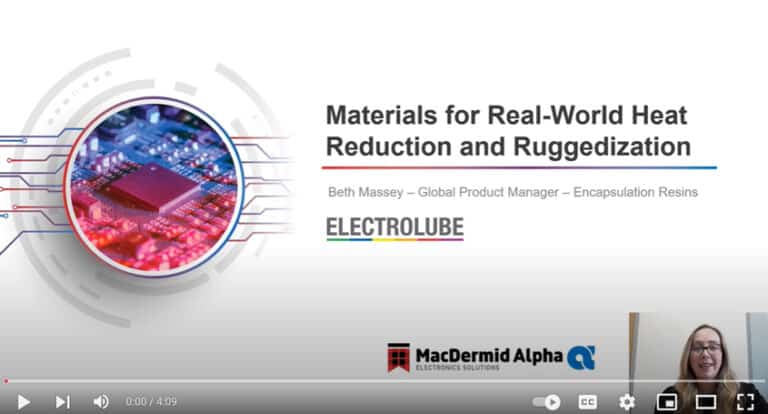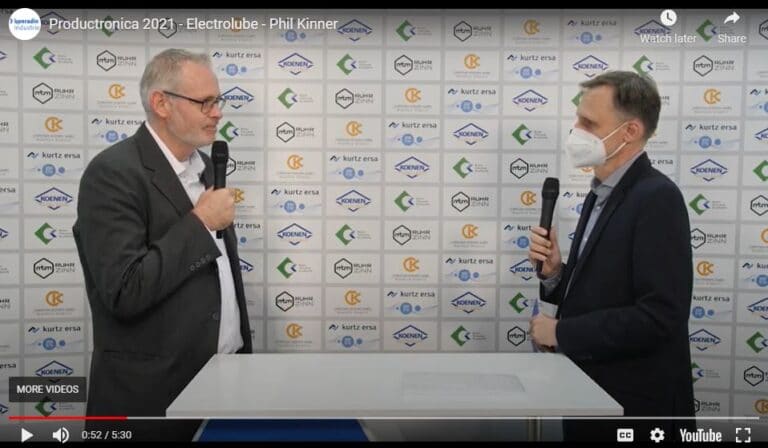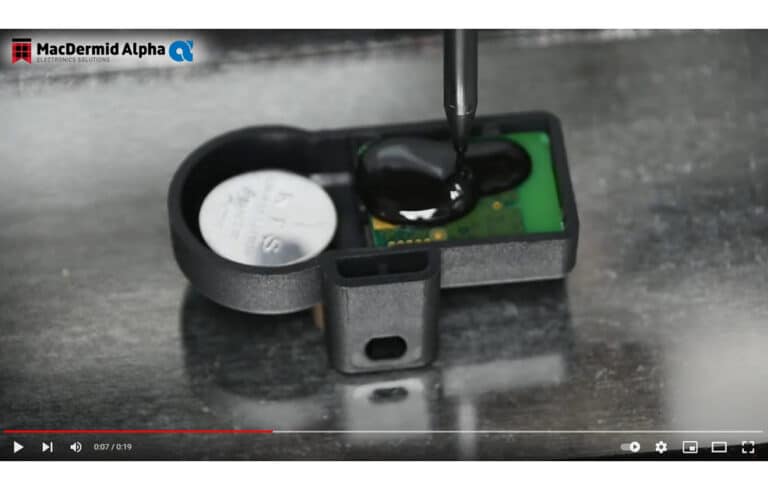You only have to visit the Resin page on the Electrolube website to find out that resins come in many forms with a list of properties that would challenge even a chemist graduate! Well, I do appreciate that most PCB manufacturers have little time to dwell on the subtleties – they just want a resin that will do the job. But with so many products on offer, how do you find time to wade through the jargon, make your choice and be confident that it will perform as expected?
Unquestionably, product detail is important to the user and will be his or her initial guide to making an appropriate choice; however, this month, I’m going to cut through some of the more heavy-going tech-speak, taking a few of my customers’ more frequently asked questions about resins to try to help you refine your selection process. There’s a lot of ground to cover, but for the purposes of this short article let’s concentrate on the PCB’s operating environment, caring for the components that are to be encapsulated, and the special needs of applications like LED lighting and RF systems.
‘General purpose’ – what exactly constitutes ‘general purpose protection’?
Can we take this to mean that a general purpose resin will meet most environmental conditions, or should we be more cautious if the operating environment is a little more challenging?
‘General purpose’ means that the resin offers good protection against the effects of temperature and humidity over a broad range, as well as providing good resistance to a wide range of chemicals. They also provide protection against vibration and shock, but when it comes to making a choice, you will need to be specific about the resin chemistries – polyurethane or epoxy – as they differ in terms of the types of protection they offer. In general, polyurethanes are better at protecting against vibration/cyclic mechanical shock and thermal cycling within an operating temperature range, as they retain their flexibility over their working life. Epoxies, on the other hand, can tolerate higher operating temperatures than polyurethanes, but they are more rigid and brittle when cured, while they are able to withstand higher mechanical shock, they are not as effective under conditions of high vibration or cycling shock.
What are the main parameters to consider when making a resin selection and what pitfalls should I look out for?
The size and geometry of a PCB assembly are important parameters to consider before you choose an encapsulation/potting resin. Size will dictate the required useable life and gel time of a two-part resin, and it will also have quite a big impact on cure time.
Useable life and gel time data are typically calculated on a 100g mix size at room temperature (20-23°C). Short gel times are good for rapid turnaround of units, but may cause problems by allowing air to be released; long gel times, on the other hand, can extend production cycle times and introduce bottlenecks into the manufacturing process.
It is important to note here that very small volumes of resin will take longer to cure and special care has to be taken to ensure that the correct mix ratio is maintained. In the case of larger volumes of resin, while the cure times will be reduced, the user must take into account the corresponding rise in temperature of the resin/hardener mix – the ‘exotherm’ – which may be high enough to damage vulnerable components. Epoxy resins are much more exothermic than polyurethanes.
With complicated geometries the flow of the resin around the components and wiring has to be taken into account. Vacuum potting should be considered where there are lots of components and/or wiring and a void free encapsulation is required.
Essentially, try to match the thermal and physical properties of the resin to the components and the substrate. Ideally, you want to have all three to have very similar thermal properties so as to minimise the stresses and strains on the PCB assembly during potting/encapsulation and subsequent curing.

What are the most sought after resin requirements for LED lighting?
When choosing a resin for LED encapsulation, optical clarity is the prime consideration, closely followed by toughness (check out our UR5634, 5638 and 5639 products, which have achieved considerable success in these applications). However, if you want to achieve a diffused lighting effect, then there are options available for this too, including our UR5635 and 5637 products, for example.
Air entrapment is the bane of any LED lighting encapsulation as it will degrade the performance of a lighting unit. I offer a key tip here: an often overlooked property is the mix viscosity of the resin which will affect the way it flows around the components. The greater the number of components in a given area, the greater will be the chances of turbulent flow and subsequent air entrapment.
With RF applications it is important that the resin does not attenuate the RF signal. How are resins formulated to achieve this?
A polymer resin itself is transparent to radio frequencies, it is the fillers that are added – usually to render the cured resin flame retardant – that can cause RF signals to be scattered and attenuated. Clearly then, the best performance is obtained with resins with little or no filler in them (take a look at our epoxies ER1137, 1426, 1448, 1450, 1451, 1452, 2223, and polyurethanes UR5048, 5118, 5123, 5545, 5562, 5626, 5634, 5635, 5637, 5638, 5639, which are all suitable for RF applications). We also have an epoxy, ER2141, which, being filled with nickel acts as an RF shield. As you can see, we cover all eventualities!
What are the steps for effective product selection? Are there any hard and fast rules or do these steps vary?
Every customer and customer project is different; while we can advise a customer as to which products are best suited to their needs based on our years of experience, it all boils down to the unit, the dispensing method/equipment to be used, the curing times and the temperature limitations that may be imposed during the production process. And the more information that the customer can provide regarding the resin’s ultimate operating conditions – temperature range, likely chemical exposures and so on – then all the better.
We hope that this article answers your questions, check back next month for the next instalment, otherwise we have a dedicated technical support team on hand to help find your solution.










